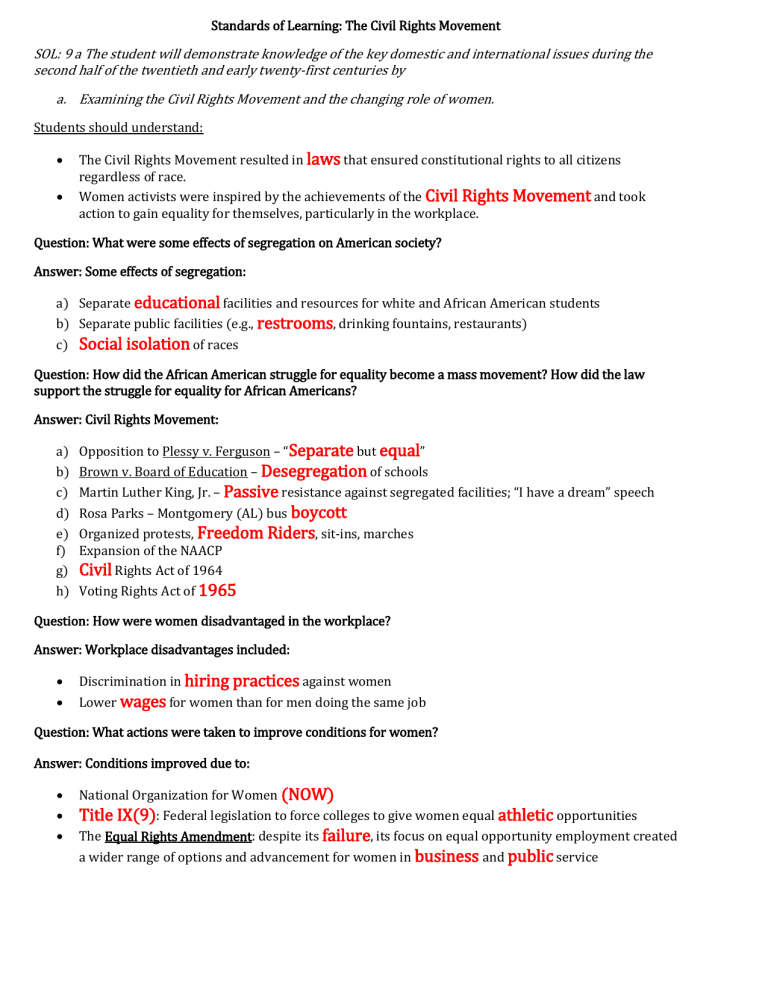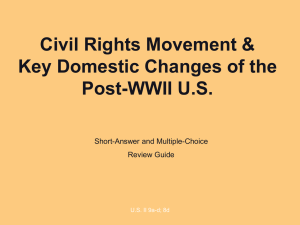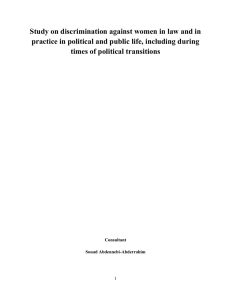Standards of Learning: The Civil Rights Movement

Standards of Learning: The Civil Rights Movement
SOL: 9 a The student will demonstrate knowledge of the key domestic and international issues during the second half of the twentieth and early twenty-first centuries by a.
Examining the Civil Rights Movement and the changing role of women.
Students should understand:
The Civil Rights Movement resulted in
laws
that ensured constitutional rights to all citizens regardless of race.
Women activists were inspired by the achievements of the
Civil Rights Movement
and took action to gain equality for themselves, particularly in the workplace.
Question: What were some effects of segregation on American society?
Answer: Some effects of segregation: a) Separate
educational
facilities and resources for white and African American students b) Separate public facilities (e.g.,
restrooms
, drinking fountains, restaurants) c)
Social isolation
of races
Question: How did the African American struggle for equality become a mass movement? How did the law support the struggle for equality for African Americans?
Answer: Civil Rights Movement: a) Opposition to Plessy v. Ferguson – “
Separate
but
equal
” b) Brown v. Board of Education –
Desegregation
of schools c) Martin Luther King, Jr. –
Passive
resistance against segregated facilities; “I have a dream” speech d) Rosa Parks – Montgomery (AL) bus
boycott
e) Organized protests,
Freedom Riders
, sit-ins, marches f) Expansion of the NAACP g)
Civil
Rights Act of 1964 h) Voting Rights Act of
1965
Question: How were women disadvantaged in the workplace?
Answer: Workplace disadvantages included:
Discrimination in
hiring practices
against women
Lower
wages
for women than for men doing the same job
Question: What actions were taken to improve conditions for women?
Answer: Conditions improved due to:
National Organization for Women
(NOW)
Title IX(9)
: Federal legislation to force colleges to give women equal
athletic
opportunities
The Equal Rights Amendment: despite its
failure
, its focus on equal opportunity employment created a wider range of options and advancement for women in
business
and
public
service









